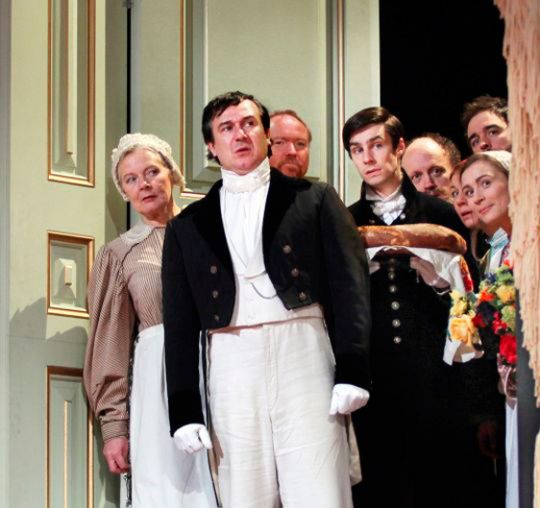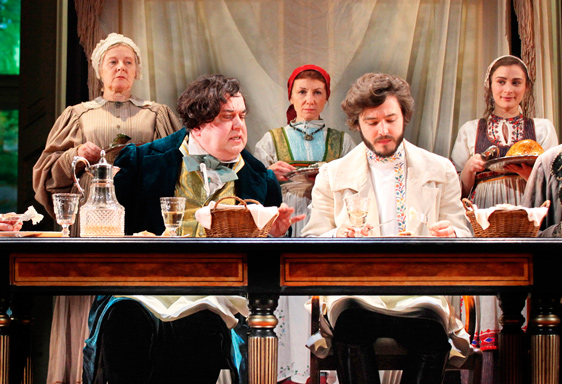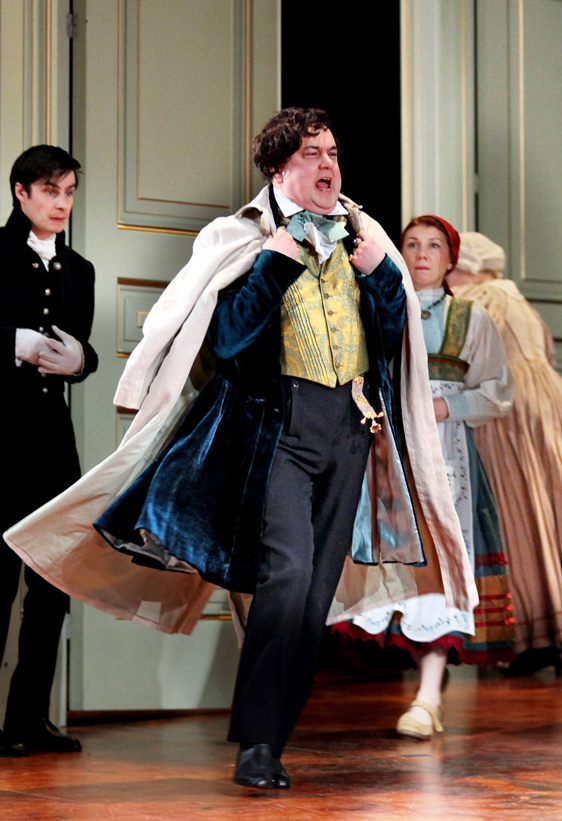The hidden meanings of Destined to be Happy exhibition - The Interview with Irina Korina
10 January 2017 | By
09 January 2017 | By
Inside the Picture: Installation Art in Three Acts - by Jane A. Sharp
19 November 2016 | By
Conversations with Andrei Monastyrski - by Sabine Hänsgen
17 November 2016 | By
Thinking Pictures | Introduction - by Jane A. Sharp
15 November 2016 | By
31 October 2016 | By
Tatlin and his objects - by James McLean
02 August 2016 | By
Housing, interior design and the Soviet woman during the Khrushchev era - by Jemimah Hudson
02 August 2016 | By
Dressing the Soviet Woman Part 3: "Are Russians Women?" Vogue on Soviet Vanity - by Waleria Dorogova
18 May 2016 | By
Dressing the Soviet Woman Part 1 - by Waleria Dorogova
13 May 2016 | By
Eisenstein's Circle: Interview With Artist Alisa Oleva
31 March 2016 | By
Mescherin and his Elektronik Orchestra - by James McLean
13 January 2016 | By
SSEES Centenary Film Festival Opening Night - A review by Georgina Saunders
27 October 2015 | By
Nijinsky's Jeux by Olivia Bašić
28 July 2015 | By
Learning the theremin by Ortino
06 July 2015 | By
Impressions of Post- Soviet Warsaw by Harriet Halsey
05 May 2015 | By
Facing the Monument: Facing the Future
11 March 2015 | By Bazarov
'Bolt' and the problem of Soviet ballet, 1931
16 February 2015 | By Ivan Sollertinsky
Some Thoughts on the Ballets Russes Abroad
16 December 2014 | By Isabel Stockholm
Last Orders for the Grand Duchy
11 December 2014 | By Bazarov
Rozanova and Malevich – Racing Towards Abstraction?
15 October 2014 | By Mollie Arbuthnot
Cold War Curios: Chasing Down Classics of Soviet Design
25 September 2014 | By
Walter Spies, Moscow 1895 – Indonesia 1942
13 August 2014 | By Bazarov
'Lenin is a Mushroom' and Other Spoofs from the Late Soviet Era
07 August 2014 | By Eugenia Ellanskaya
From Canvas to Fabric: Liubov Popova and Sonia Delaunay
29 July 2014 | By Alex Chiriac
My Communist Childhood: Growing up in Soviet Romania
21 July 2014 | By Alex Chiriac
Monumental Misconceptions: The Artist as Liberator of Forgotten Art
12 May 2014 | By Rachel Hajek
28 April 2014 | By Rachel Hajek
An Orgy Becomes a Brawl: Chagall's Illustrations for Gogol's Dead Souls
14 April 2014 | By Josephine Roulet
KINO/FILM | Stone Lithography Demonstration at the London Print Studio
08 April 2014 | By Alex Chiriac
24 March 2014 | By Renée-Claude Landry
Book review | A Mysterious Accord: 65 Maximiliana, or the Illegal Practice of Astronomy
19 March 2014 | By Rosie Rockel
Leading Ladies: Laura Knight and the Ballets Russes
10 March 2014 | By Bazarov
Exhibition Review | Cash flow: The Russian Pavilion at the 2013 Venice Biennale
03 March 2014 | By Rosie Rockel
24 February 2014 | By Ellie Pavey
Guest Blog | Pulsating Crystals
17 February 2014 | By Robert Chandler Chandler
Theatre Review | Portrait as Presence in Fortune’s Fool (1848) by Ivan Turgenev
10 February 2014 | By Bazarov
03 February 2014 | By Paul Rennie
Amazons in Australia – Unravelling Space and Place Down-Under
27 January 2014 | By Bazarov
Exhibition Review | Siberia and the East, fire and ice. A synthesis of the indigenous and the exotic
11 December 2013 | By Nina Lobanov-Rostovsky
Shostakovich: A Russian Composer?
05 December 2013 | By Bazarov
Marianne von Werefkin: Western Art – Russian Soul
05 November 2013 | By Bazarov
Chagall Self-portraits at the Musée Chagall, Nice/St Paul-de-Vence
28 September 2013 | By Bazarov
31 July 2013 | By Richard Barling
Exhibition review | Lissitsky — Kabakov: Utopia and Reality
25 April 2013 | By Richard Barling
Exhibition review | Ilya and Emilia Kabakov: The Happiest Man
18 April 2013 | By Richard Barling
10 February 2014 | By Bazarov

A feature of this exquisite and rarely staged play, currenly running at London’s Old Vic theatre, is that two of the principal characters are dead. The supposed father and wronged mother of heiress Olga Petrovna, around whom the play turns, are central to the plot as it unfolds, though both long deceased. But through an ingenious and successful directorial device, they are loomingly present at key moments in the drama.
The stage is set at the opening by an immense full-length portrait of the father, former master of the estate, dominating the stage before a distant view of the mansion. Brooding and in military garb, it is no surprise to find that he was a brutish bully who drove his wife to despair and adultery. A mid-19th-Century society portrait in the style of Ge or Kramskoi, the gravity of the image is disrupted by a full size wardrobe set off-centre into the portrait at the level of the master’s legs. It is from the top shelf of this linen cupboard that we see descend Kuzovkin, ‘an impoverished gentleman’ who, mysteriously, has lived in the mansion for thirty years, watching the growth into womanhood of the young Olga.

The return of Olga from St Petersburg, as bride of the coldly correct Pavel Nikolaitch, a government official, precipitates a crisis in the household of the sort with which readers of Turgenev’s Fathers and Sons will be familiar. At a drunken welcome-home party for the new master, Kozovin is taunted as the old master’s fool, and goaded into releasing the dramatic news that Olga is in fact his own daughter, begotten while he was comforting the abused and abandoned mistress of the estate.

In the denouement, which sees the hapless Kozovin banished from the estate after a distraught final meeting with his daughter (echoes of Lear and Cordelia in a minor key), Olga’s ‘father’ and mother once again preside over the scene, their portraits across from one another as the sorry tale unfolds. Before each is set a small icon. The mother is in a softer style, an early Repin perhaps, with a melancholy that seems to set her as the Madonna of the estate. Her icon is tended and glows, Olga’s old nanny genuflects before it. The old master’s icon is unlit.
Fortune's Fool is on show at the Old Vic until 22 February 2014. Book tickets here.


